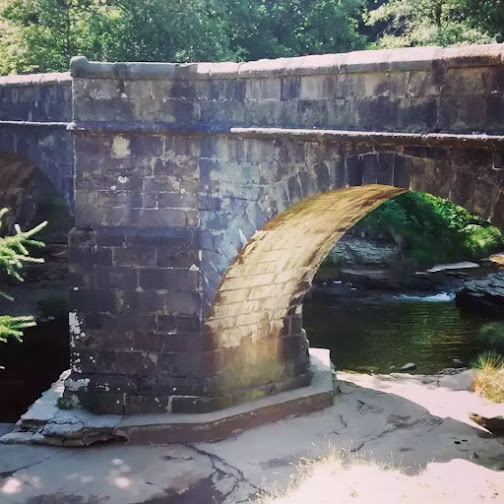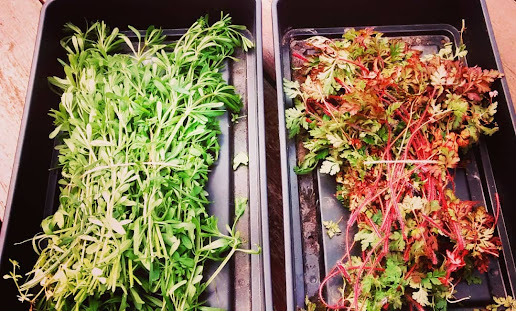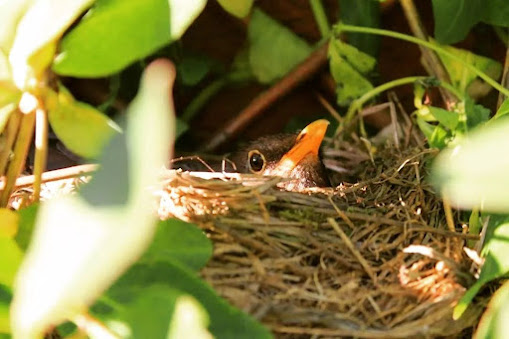As 2022 draws to a close, I share some of my sunset photographs which I have taken over the last few years from different UK locations.
Wednesday 28 December 2022
Monday 31 October 2022
Domestixperiments of Samhuinn
"Samhain is the dark phase of the year's cycle when the mystery of transformation occurs. This process involves a descent and a death of something old in preparation for something new to be reborn. The descent into the Underworld or Otherworld can be understood as a journey into the unconscious and the spirit reals within each of us. The seeds of our ideas and future direction in life are incubated in our unconscious during the winter months, ready for rebirth in the spring. We can honour the cycle by being aware that each end and death of the old will bring opportunity for a new start as each beginning holds within it an end. This endless cycle of change is necessary, bringing renewal of cells, of ourselves, our understanding and our ideas. It means there are always new opportunities to start again, to stay healthy. Many illnesses are rooted in stuck energy patterns, emotional congestion, and hanging on to the past."
Glennie Kindred, from Sacred Celebrations: A Sourcebook. Gothic Image Publications (2001).
Saturday 1 October 2022
Wet Leg: Chaise Longue (French Version, 2022)
With a track called Chaise Longue, it makes sense to have a French version, but it should've been recorded first, right?
Wednesday 7 September 2022
Duck Raman
I adapted this recipe from the book Wagamama: Feed Your Soul, which is a recipe sourcebook of the famous Japanese restaurant chain. The original recipe calls for cod, but I substituted this with duck and it worked perfectly fine. There are a number of raman variations in the book, which also includes a host of fresh favourites, plant-based creations, rice & noodle dishes, sides, sauces and marinades. One of the advantages of this particular recipe is that it required pak choi, and I had a fresh batch from the garden.
Ingredients:
4 duck fillets
3 tablespoons vegetable oil
200g soba noodles
200g pak or bok choi
500ml Vegetable Stock (or use a good-quality stock cube)
2 teaspoons light soy sauce
1 teaspoon oyster sauce
1 tablespoon fish sauce
1 tablespoon white miso paste
2 teaspoons mirin 1 tablespoon soy sauce
2.5cm piece of ginger, peeled and grated
1 tablespoon sesame oil garnish
2 spring onions, finely sliced
12 pieces menma
1 tablespoon chilli oil, to taste
Method:
- Place the marinade ingredients in a wide, shallow bowl and stir to combine.
- Add the duck fillets and coat well, then cover and leave to marinate in the fridge for at least 30 minutes.
- Heat 2 tablespoons of the oil in a frying pan or wok over a medium heat until hot and place the duck fillets, skin-side down, into the pan
- Pan-fry the duck for 2–3 minutes until the skin is golden brown, then turn and cook for a further 2–3 minutes on the other side.
- Transfer the duck to a plate and set aside.
- Bring a pan of salted water to the boil and cook the noodles according to the packet instructions, then set aside.
- Add the remaining oil to the wok and stir-fry the pak or bok choi until it starts to wilt.
- Add the vegetable stock to the wok with the soy, oyster and fish sauces and stir to heat through.
- Divide the noodles between 2 serving bowls and add the broth.
- Top with the pak choi and cod and garnish with the spring onions, menma and a drizzle of chilli oil, to taste.
From the book: Wagamama Feed Your Soul: Fresh & Simple Recipes from the Wagamama Kitchen (pp. 137-138). Octopus. Wagamama Limited.
Wednesday 24 August 2022
Malham Cove
Been wanting to do this walk for a while. Real bucket list stuff. I had the pleasure of taking my nephew and introducing him to the art of perambulation. The journey from Lincolnshire was quite long, and we agreed that he would play rap on the way there, and I would play hippy boho retro space raga faery fluff on the way back. It kinda worked out. He was grooving to Mellow Candle and Caravan by the end, so thats a win.
The map below is pretty much exactly the walk we did, although we started from a field to the south of Malham, which had been temporarily turned into a car park. We walked to Janet's Foss where there were a number of people taking the fresh waters of the falls, then walked up to Gordale Scar although we didn't proceed further that way. It was more of a reccie to see what was involved with the rock climbing/ scrambling. It doesn't look too daunting, although I have read differing estimates of its difficulty level online. One for the future maybe. Anyway we returned the way we came then turned right to walk over the tops, via the limestone pavement, then descended to the amphitheatre of Malham Cove. from there the return was very easy along Malham Beck and through the village back to the car.
There are options for future walks. Gordale Scar obviously, but also Malham Tarn, to the north of that taking in the Pennine Way, and several other circular walk permutations. We successfully avoided the rain all day and even though it was the school holidays, there weren't too many people around. A tolerable number I would say. The whole valley was alive with the concert of blossoming limestone flowers, joyous acrobatic birdsong, and the certain knowledge that the apex of an English summer had arrived.
Monday 1 August 2022
Lughnasadh (Lammas)
At Lughnasadh the first fruits of the harvest were cut down and offered to the gods. Celebration circular dances were performed in which the chiefs of the tribes wore horned headpiecesnin honour of hunting and physical prowess, and corncakes were baked in the shape of the corn king, Bel, who was treated as a sacrificial god and eaten. The autumn festival was one of plenty and prosperity, of celebration of the fruits of the earth and its bounty. It was also a time when alliances were arranged and marriages contracted. There was also a Celtic system in which a trial marriage could be entered into at Lughnasadh, and if the union proved unhappy, the contract could be dissolved at Beltain.From: The Celtic Book of Seasonal Meditations, by Claire Hamilton, 2002.
Sunday 17 July 2022
Upper Derwent & Howden Reservoirs
Friday 17 June 2022
Herbalizing
Here are a few herbal medicine projects I have been carrying out during lockdown:
Tuesday 17 May 2022
Blackbird Fledgling
The normal clutch size is 3-5. Larger clutches are laid in woodland than in gardens. The female incubates alone, and the chicks hatch 13-14 days later. Only the female broods the chicks, but both parents feed them. Chicks in gardens are fed on earthworms when they are available; woodland chicks are fed mainly on caterpillars.The chicks are ready to fledge at 13-14 days, but if the nest is disturbed, they can leave and survive as early as nine days old. This ability to fledge early is an important anti-predator adaptation. The young birds creep and flutter from the nest, and remain in nearby cover for the following few days.They are flightless at first, but within a week will have learned to fly. By this time, they begin to experiment with foods, learning by trial and error what is edible. As their skills and confidence grow, they begin to explore their parents' territory and range more widely. The young become independent three weeks after leaving the nest, and leave the natal area shortly after. They are not driven away by the male.Fledged young are often left in the care of the male, while the female prepares for the next nesting attempt. The last brood of the season is usually divided between the parents, with each adult taking sole care of some of the young.There are considerable losses at the egg and chick stage, with at best 30-40 per cent of nests producing fledged young. Despite smaller clutch sizes, birds in towns fledge more chicks per nest than birds in the countryside.


















































